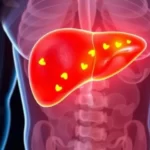Pain on top of foot isn’t just an inconvenience; it can interrupt daily movement, prevent proper exercise, and in some cases, signal a more serious medical issue. Whether you’re experiencing a sharp pain in the foot or a dull ache pain on top of foot, recognizing the root cause is essential.
Have you ever wondered, “Why does the top of my foot hurt when walking?” Or noticed that your top of foot hurts after running, even when wearing good shoes? You’re not alone. These are among the most searched foot-related complaints on Google, and for good reason. The top of your foot, or the dorsal surface, is a complex structure of tendons, nerves, and small bones, all of which can become irritated by stress, injury, or inflammation.
What Is Top of Foot Pain?
Top-of-foot pain refers to discomfort experienced along the dorsal (upper) surface of the foot. The sensation can vary widely depending on the cause, ranging from mild tenderness or aching to sharp, stabbing pain. In some cases, it may feel like pressure or burning, especially during weight-bearing activities. For others, the pain emerges during rest, particularly after long periods of standing or walking.
This pain is often misunderstood, as it doesn’t originate in areas commonly associated with foot injuries, such as the heel or arch. Yet, it’s a critical region involving tendons, nerves, small bones, and soft tissue that all play a role in your foot’s movement and stability.
What Causes Pain on the Top of the Foot?
There’s no one-size-fits-all answer. pain on top of foot can be linked to overuse injuries, structural imbalances, inflammatory conditions, or nerve entrapment. Many conditions can lead to pain on top of foot when walking, standing, or running. Below are the most common medically recognized causes:
Extensor Tendonitis
This overuse injury involves inflammation of the extensor tendons that run across the top of foot and help raise the toes. It’s one of the leading causes of Pain on top of foot when walking, especially in athletes or those wearing tight footwear.
Symptoms include swelling, pain while flexing the foot, and tenderness directly over the tendon area.
Metatarsal Stress Fracture
Repeated pressure or impact can cause tiny fractures in the long bones of the foot (metatarsals), often leading to pain at the top of the foot after running or prolonged standing. These fractures can occur even in healthy individuals who increase activity too quickly.
Pain is usually sharp, worsens with pressure, and improves with rest. Early detection is key to preventing a complete break.
Nerve Entrapment
Compressed nerves in the foot, such as the deep peroneal nerve, may trigger symptoms like tingling, numbness, burning, or a sharp, shooting pain that radiates. This is sometimes mistaken for tendonitis or a fracture, but it is a neurological issue.
People with improper footwear or altered gait due to flat feet or injury are more at risk.
Arthritis
Multiple forms of arthritis, including osteoarthritis, rheumatoid arthritis, and post-traumatic arthritis, can cause inflammation in the joints across the top of the foot. The result is stiffness, swelling at the top of the foot, and progressive discomfort that worsens with activity.
This pain may feel dull or deep and is often worse in the morning or after periods of inactivity.
Bone Spur
A bone spur is an abnormal bony growth, typically caused by joint degeneration or repetitive trauma. When located on the top of the foot, it can press against tendons or nerves and lead to a sharp pain on top of foot that flares up during walking or pressure.
Bone spurs are sometimes painless, but often become problematic when combined with the pressure of shoes.
Ganglion Cyst
A ganglion cyst is a fluid-filled sac that forms near a joint or tendon. If it appears on the top of your foot, it may interfere with shoe fit and cause pain or discomfort when walking or standing. These cysts may be visible or felt as a soft, round mass under the skin.
Gout
Gout is a form of arthritis that occurs due to uric acid crystal buildup in joints. While it typically affects the big toe, gout in the foot can also manifest as sudden pain on top of foot, accompanied by redness, warmth, and extreme sensitivity to touch.
Symptoms That Help Identify the Problem
Each cause of pain on top of foot presents slightly differently, but some symptoms overlap:
- Pain that worsens with walking or running (e.g., tendonitis, stress fracture)
- Pain during rest or sleep (e.g., gout, arthritis)
- Swelling or redness on the top of the foot
- Tenderness to the touch
- Numbness or tingling (indicative of nerve issues)
- Visible lumps or protrusions (suggest bone spurs or cysts)
The pattern, timing, and location of the pain are key diagnostic clues.
How Is Foot Pain Diagnosed?
If your pain persists longer than a few days or intensifies, a healthcare provider may perform a foot injury diagnosis through a combination of:
- Physical examination: Range of motion, palpation, and gait analysis
- Imaging: X-rays to detect fractures, spurs, or arthritis
- MRI or Ultrasound: To assess soft tissues and cysts
- Nerve studies: To confirm or rule out nerve entrapment
- Blood tests: Especially if gout or autoimmune arthritis is suspected
An accurate diagnosis prevents complications and allows targeted treatment.
Treatment Options: From Home Remedies to Professional Care
The treatment approach depends on the underlying cause. Here’s how to relieve pain on top of foot using both home-based strategies and medical intervention.
Home-Based Care
- Rest and activity modification: Avoid high-impact activities until symptoms improve.
- Ice therapy: Apply ice packs for 15–20 minutes several times a day to reduce inflammation.
- NSAIDs: Over-the-counter medications, such as ibuprofen, help manage pain and swelling.
- Footwear changes: Switch to well-cushioned, supportive shoes with a wide toe box. Avoid shoes that compress the top of your foot.
- Orthotic inserts: These support the arch and reduce mechanical stress on the midfoot and tendons.
- Stretching exercises: Gentle calf and toe stretches can relieve tension in surrounding muscles and tendons.
Medical & Surgical Intervention
When conservative treatment isn’t enough, especially in cases involving chronic or worsening symptoms, medical or surgical procedures may be necessary. These are tailored to the root cause and aim to restore function while minimizing recurrence.
- Corticosteroid Injections: Used for arthritis or tendon inflammation
- Physical Therapy: Improves strength, alignment, and joint stability
- Cyst Aspiration or Removal: For ganglion cysts causing compression
- Surgical Intervention: Reserved for severe nerve entrapment, bone spurs, or advanced arthritis
When to See a Doctor
While mild pain on top of foot can often be managed at home, persistent or worsening symptoms may indicate a more serious issue that requires professional attention. Early intervention can prevent complications and help you recover faster with the correct diagnosis and treatment plan.
Not all foot pain requires a specialist visit, but you should consult a podiatrist or orthopedic doctor if:
- Pain lasts more than a week despite home care
- You have swelling, redness, or visible deformity.
- Pain worsens with walking or affects your balance.
- You feel tingling or numbness (possible nerve entrapment)
- There’s a lump or bump that interferes with the shoe fit
- You suspect a metatarsal stress fracture.
Early intervention can reduce the risk of long-term damage and get you back on your feet faster.
How to Prevent Pain on the Top of the Foot
Preventing foot pain begins with understanding your risk factors and making wise daily choices. Proper footwear, body mechanics, and recovery habits go a long way in achieving optimal performance.
Prevention strategies:
- Wear supportive footwear with proper arch and toe room
- Avoid overtraining; build activity gradually
- Replace worn-out footwear regularly
- Use orthotics if you have flat feet or biomechanical issues
- Warm up and stretch before physical activity
- Maintain a healthy weight to reduce joint load
- Address minor symptoms early before they escalate.
Conclusion
Pain on top of foot can start as a mild irritation but evolve into a significant obstacle if left unaddressed. Whether it’s caused by extensor tendonitis, stress fractures, nerve compression, or gout, the key is identifying the source early and choosing the right treatment path.
Using supportive footwear, listening to your body, and practicing innovative prevention can help you stay active and pain-free. And when in doubt, see a podiatrist. Your feet are your foundation.
So, what’s my final advice? Please don’t ignore Pain on top of foot. From my clinical experience, I can tell you that it’s your body’s way of telling you something isn’t right. By listening to it, trying simple home remedies, and consulting with a doctor when needed, you can get back on your feet without pain. Your feet are your foundation—take good care of them.
Frequently Asked Questions
What does it mean when the top of my foot hurts?
Pain on the top of your foot can indicate issues like extensor tendonitis, stress fractures, nerve compression, or arthritis. It often results from overuse, improper footwear, or inflammation of the tendons and joints.
How do you get rid of pain on the top of your foot?
To relieve top-of-foot pain, rest the foot, apply ice, take anti-inflammatory medications, and wear supportive footwear. In more serious cases, physical therapy, orthotics, or medical intervention may be needed.
What does tendonitis on top of the foot feel like?
Tendonitis on top of the foot, especially extensor tendonitis, feels like a dull ache or sharp pain that worsens with walking or toe flexion. The area may be tender, swollen, or sensitive to pressure from shoes.
Does diabetes cause pain on top of foot?
Yes, diabetes can lead to nerve damage (diabetic neuropathy), which may cause pain, tingling, or burning on the top of the foot. Individuals with diabetes should closely monitor any new or unexplained foot pain.
Medically Reviewed by Dr. Muhammad Usman
References
- Cleveland Clinic. Foot Pain: Causes, Treatment & Prevention. Available at: https://my.clevelandclinic.org/health/diseases/14639-foot-pain
- Mayo Clinic. Foot pain – Causes. Available at: https://www.mayoclinic.org/symptoms/foot-pain/basics/causes/sym-20050792
- National Health Service (NHS, UK). Foot pain. Available at: https://www.nhs.uk/conditions/foot-pain/
- MedlinePlus, U.S. National Library of Medicine. Foot Injuries and Disorders. Available at: https://medlineplus.gov/footinjuriesanddisorders.html












Leave a comment